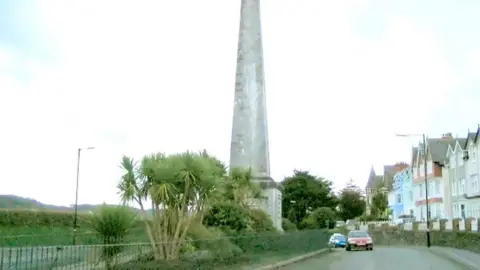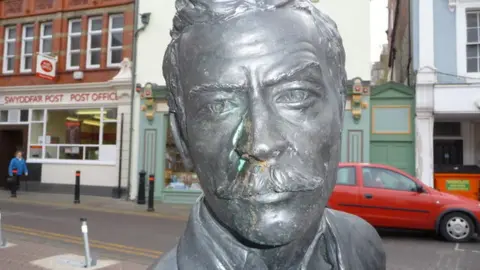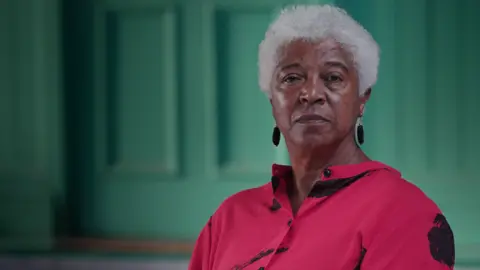Slavery: 200 memorials linked to slave trade and activists in Wales
 Getty Images
Getty ImagesWales has 209 streets, buildings, portraits or monuments commemorating people directly involved with the slave trade or who opposed its abolition.
An audit also found "commemoration of people of colour" to be "negligible".
The review was ordered by First Minister Mark Drakeford following protests prompted by the killing of George Floyd in the US.
Mr Drakeford said the audit "helps us establish an honest picture of our history".
Commemorations identified included:
- 13 monuments, buildings or street names commemorating people who took part in the African slave trade
- 56 monuments, buildings or street names commemorating people who owned or directly benefited from plantations or mines worked by slaves
- 120 monuments, buildings or street names commemorating people who opposed abolition of the slave trade or slavery
- 20 monuments, buildings or street names commemorating people accused of crimes against black people, notably in colonial Africa
The audit, led by Gaynor Legall, found commemorations of people connected with the slave trade were often shown without any accompanying interpretation to address matters of contention, so the figures were presented solely as role models rather than representatives of challenging aspects of the past.
The audit also unearthed commemorations to anti-slavery activists across Wales, such as Henry Richard in Tregaron, Ceredigion, street names for Samuel Romilly and the Pantycelyn halls of residence at Aberystwyth University, Ceredigion.
 Geograph / Nigel Davies
Geograph / Nigel Davies The report said: "It is striking that the only sculpture depicting people of black heritage is not a monument to named individuals, but an anonymous statue group in Cardiff Bay."
A statue to celebrate the life and contributions of Wales' first black headteacher Betty Campbell is set to be placed in Cardiff, but not until next year.
There have been widespread calls for the statues of slave owners and those who supported the slave trade to be removed, but some have opposed the idea.
In July, a statue of a 19th Century slave owner Sir Thomas Picton in Cardiff City Hall was covered over.
In Denbigh, people will be consulted on removing a statue honouring Victorian adventurer Henry Morton Stanley who opponents claim had links to slavery.
Ysgol Goronwy Owen in Benllech on Anglesey is mentioned in the audit as its namesake poet owned slaves.
 Geograph / Jeremy Bolwell
Geograph / Jeremy Bolwell"While the tragic killing of George Floyd happened almost 4,000 miles away, it sparked global action that shone a light on racial inequality in society today," Mr Drakeford said.
"That inequality exists in Welsh society too and we must work towards a Wales which is more equal.
"This audit provides important evidence which helps us establish an honest picture of our history.
"This is not about rewriting our past or naming and shaming. It is about learning from the events of the past."
He said the audit was the "first stage of a much bigger piece of work" to "consider how we move forward with this information as we seek to honour and celebrate our diverse communities".

Speaking to Claire Summers on BBC Radio Wales, Ms Legall said: "We certainly were careful not to make recommendations - different people have different views, some feel more strongly than others.
"We would like to see some more commemorations of people of colour.
"We would like to see that this work is carried on, and perhaps incorporated into the new work around the curriculum, so that people in Wales - children, young people in particular - can have a true picture of where its economy grew from."
